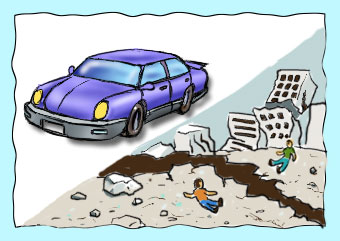Text types: Explanations
| Overview |
What are explanations?
Explanations are texts (or parts of texts) that explain:
| how something is done, for example, how a car is built | |
| how something happens, for example, a natural phenomenon like an earthquake |
|
If we want to say how something is done (How is a car built?) as opposed to describing a thing (What is a car?), then we need to explain what happens first, what happens next, and so on for each step in sequence until the whole process is complete. So an explanation (explaining a process) is much more complex than a description (describing a thing). Some explanations also say why things happen. For more information on this kind of explanation, click on the menu on the left: Another type of explanation: 'Why' explanations. |
 |
Why do we use explanations?
Children are very curious about their world and are always asking questions. We use explanations in order to help them (or us) understand how and why the world operates in the way it does. Children will come across many explanations in school textbooks but also in the following places:
| children's 'How and Why' books | |
| television programmes | |
| the Internet | |
| encyclopedias (including those on CD-ROM) |
 |
Students can read accounts of how a mobile phone works or why volcanoes erupt. With assistance they can also write explanations of all kinds, about fascinating things which they encounter in their daily lives and in school ('How do birds fly?', 'Why do we need food?'). Later on in their school life they will often be asked to write explanations in the exams for different school subjects, such as Science and History. |
How can these files help me?
In these files you will find answers to the following questions:
| How are explanations structured? | |
| What are the typical grammatical features of explanations? | |
| How can I use explanations in the classroom? |
Sample texts
We have provided you with several examples of explanations. You will find two of them analysed in terms of structure and typical grammatical
features in the other files in this set. For more information, choose from one of the
options in the menu on the left.
|
||
To give us feedback about this section, click here or on the Comment button at the top of the screen.
If you have any questions about this section, visit the Language Corner.
If you have any questions or suggestions about how to teach this section, send a message to the Teaching Corner.